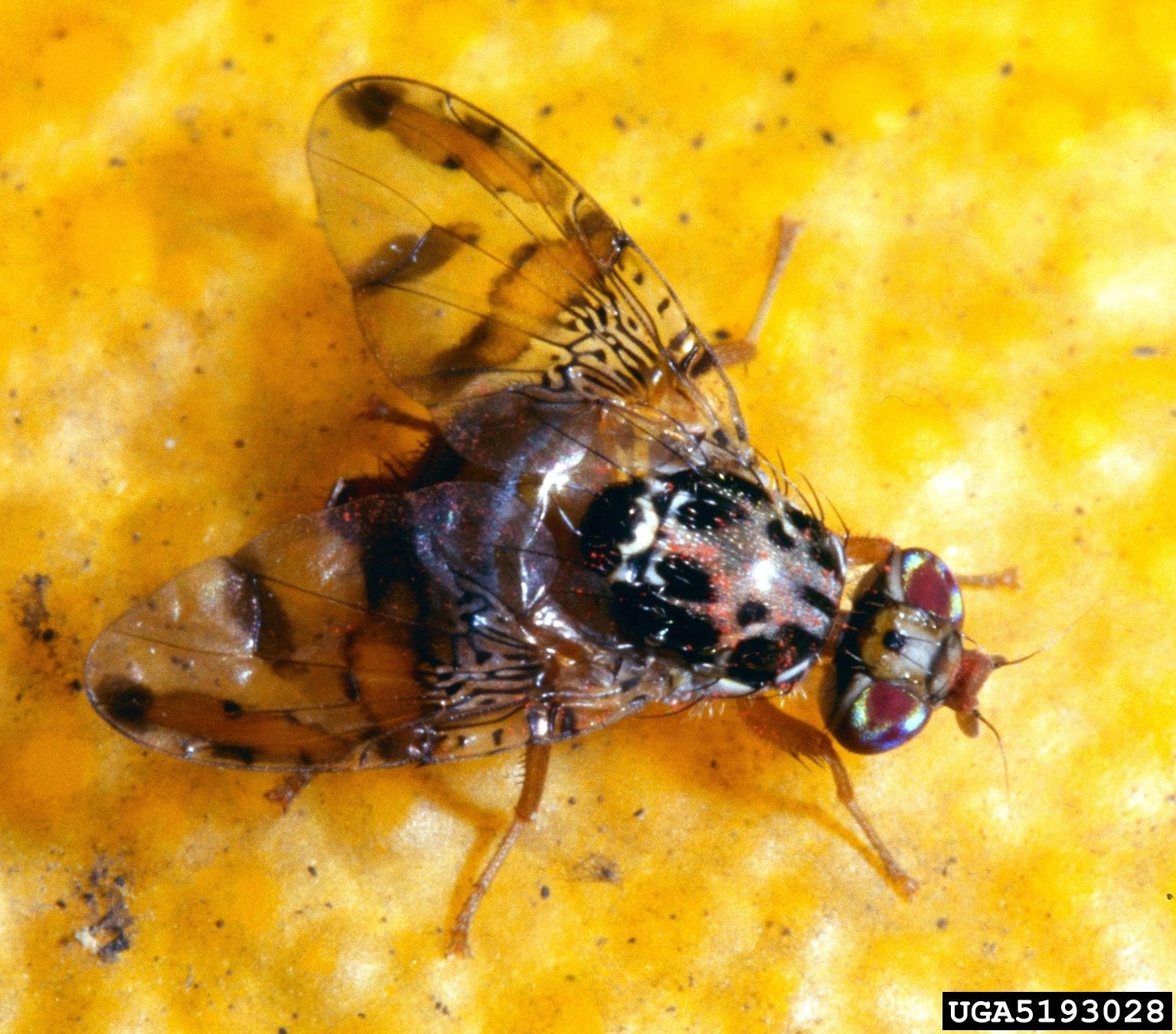Citrus Fruit Flies: Protecting Citrus From Fruit Fly Pests

As home gardeners, we all know that our fruits and veggies are susceptible to a variety of pests. Citrus trees are no exception and, in fact, have a plethora of damaging pests which may infest the fruit. Among these are citrus fruit flies.
Fruit Flies in Citrus
There are a number of fruit flies in citrus. These are some of the most common marauders:
Mediterranean fruit fly
One of the most disastrous pests, the Mediterranean fruit fly, or Ceratiitis capitata (Medfly), has afflicted areas from the Mediterranean, southern Europe, the Middle East, western Australia, South and Central America, and Hawaii. Medfly was first recognized in Florida in 1929 and damages not only citrus fruits but the following:
Caribbean fruit fly
One of the more common citrus fruit flies to plague citrus groves is called the Caribbean fruit fly or Anastrepha suspensa. Caribbean fruit flies found in citrus are native to the islands of the same name but have migrated over time to afflict groves worldwide. Caribbean fruit flies have been found in citrus groves of California and Florida in the United States, Puerto Rico, Cuba, the Bahamas, the Dominican Republic, Haiti, Hispaniola, and Jamaica. Also known as the Antillean fruit fly, or the guava fruit fly, this genus includes other species such as Anastrepha ludens, or Mexican fruit fly, known to affect fruit production and marketability of ripened citrus. A. supensa is about one-half to two times larger than the average house fly and has a wing band of dark brown whereas its counterpart, A. ludens, is yellower in hue. The dorsal or top of the thorax between the rear two plates is marked with a black dot. Eggs are not usually visible, as the fruit flies of citrus trees lay their eggs singly under the peel of the fruit, and generally not more than one or two eggs per fruit. The insect transforms through three larval instars prior to pupation. The larvae tunnel through the fruit and then once completing their three instar stages, drop from the fruit to pupate in the ground. The pupa is long, oval, shiny brown and hard to the touch. There are two strains of A. suspensa. The Key West strain afflicts overripe citrus fruit as well as guava, Surinam cherry, and loquat. There is also a strain referred to as the Puerto Rican strain which is the more problematic of the two. The Puerto Rican strain affects the following citrus and other fruits:
While the damage has been relatively minor with regards to production, protecting citrus from fruit fly pests has been a major concern among commercial growers.
Citrus Fruit Fly Control
Methods for protecting citrus from fruit fly pests range from chemical to biological controls. Limited spraying of groves has been shown to reduce fruit fly populations; however, more often integrated pest management has been brought into play using biological control techniques. The introduction of endoparasitic braconid wasps, which parasitize the larvae of the fruit fly, have shown excellent reductions in the population. Commercial citrus growers also release many sterile flies which interrupts the population since mating will not result in offspring.
Gardening tips, videos, info and more delivered right to your inbox!
Sign up for the Gardening Know How newsletter today and receive a free copy of our e-book "How to Grow Delicious Tomatoes".

Amy Grant has been gardening for 30 years and writing for 15. A professional chef and caterer, Amy's area of expertise is culinary gardening.
-
 Want The Longest Lasting Hydrangea Flowers? Grow These 8 Panicle Hydrangea Varieties
Want The Longest Lasting Hydrangea Flowers? Grow These 8 Panicle Hydrangea VarietiesFor ornamental shrubs that deliver the longest flowering seasons with plush blooms and delicate hues, these panicle hydrangea varieties are essential in your yard
By Tonya Barnett
-
 Moody Blooms For Spring: 8 Types Of Black Flowers To Add Drama To Spring Displays
Moody Blooms For Spring: 8 Types Of Black Flowers To Add Drama To Spring DisplaysFrom midnight burgundies to inky violets, several types of black flowers can enrich and embolden a spring display. Try these brooding bloomers for a moody garden
By Tonya Barnett